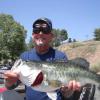-
Posts
14,656 -
Joined
-
Last visited
-
Days Won
356
Content Type
Profiles
Articles
TU Classifieds
Glossary
Website Links
Forums
Gallery
Store
Everything posted by mark poulson
-
Ted,
My phone # is (310) 908-9047.
My buddy gave me this mold as a gift from Bass Pro, and it is supposed to arrive sometime next week.
Once I have it in hand, I'll measure the pin sizes, and pm you with them.
Mark
-
Nathan,
The Hard Baits Forum has been spammed again.
I hope you're doing well.
Happy Holidays!
Mark






